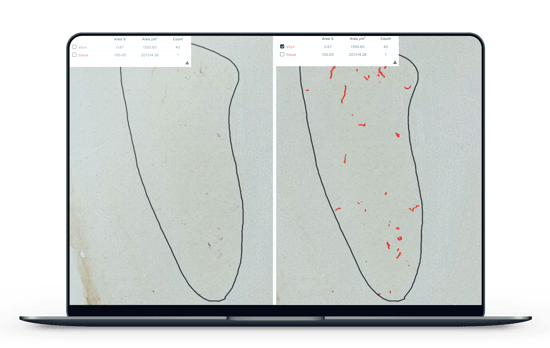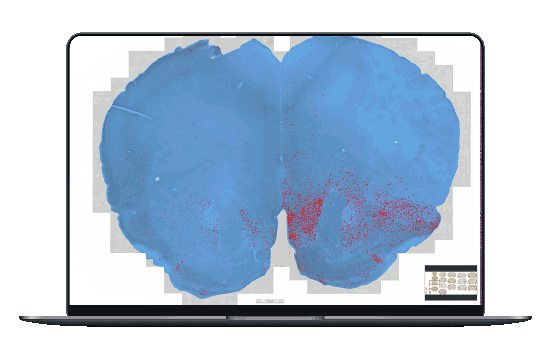We interviewed Christopher Tulisiak, PhD, a Postdoctoral Fellow at the Van Andel Institute, about their research on Parkinson's disease. Read his answers below.
Why did you decide to use Aiforia’s AI software and services?
"We recognized that Aiforia could provide us a uniform, fully quantitative, unbiased way to analyze the presence of a specific marker of pathogenic α-synuclein, a key hallmark of Parkinson’s disease. We had previously used several different analysis methods to assess pathogenic α-synuclein immunoreactivity in the brain, ranging from semi-quantitative scoring to densitometry to stereology.
None were perfect, either lacking complete objectivity, requiring perfect staining and imaging, or quantifying only Lewy bodies, but not the highly abundant and stringy Lewy neurites. Because Lewy neurites are highly abundant in our mouse model, but as no analysis method was able to perfectly represent them quantitatively, a large portion of pathology was missed by these tools."
For which projects was Aiforia used?
"Our project has utilized Aiforia’s custom AI services, which have seen us work closely with Aiforia's outstanding Field Application Specialist (FAS) to develop four separate AI models that contribute either to quantitating the number or morphology of specific cell types or to the presence of pathogenic α-synuclein."

"Our FAS has worked diligently to train the AI models based on our criteria, and then members of our laboratory work as external validators of each of the AI models’ performance. After each validation, the AI is fine-tuned into a new iteration until it is ready for release when it performs with an exceptionally low error rate in comparison to validators’ annotations."

"We will soon be transitioning to Aiforia® Create in order to continue to fine-tune our AI models when we have sections that vary from those on which the AI was trained."
What were the other three Aiforia AI models trained to detect and analyze?
"Using the different tools Aiforia provides, we were able to develop AI models for the quantitation of both tyrosine hydroxylase (TH)-positive neurons (which are selectively lost in Parkinson’s disease) by cell counts, and astrocyte and microglia activation (which is a common immunoreaction to pathological insults) by morphological analysis.
Aiforia's software saves us many hours of work because, beyond imaging (which is now passively achieved using a scanner, as opposed to actively with a microscope), analysis is automated by the AI model over the course of minutes (or hours at most). After the analysis is complete, we export the results, organize them using our statistics software of choice, and generate figures."
What is the biggest benefit to your research?
"Our AI models provide the objectivity of fully quantitative analysis that covers entire brain regions and time-saving through passive image acquisition and analysis, during which we can accomplish other goals.
For the TH model, coverage is greatly increased and practically more accurate than an unbiased sampling of stereology (which is excessively time-consuming). For astrocyte and microglia models, the goal is higher accuracy compared to contrast-based densitometry (and increased coverage). And for α-synuclein, we capture a full representation of varying synucleinopathy morphologies in a fully quantitative manner."
Read more neuroscience case studies: